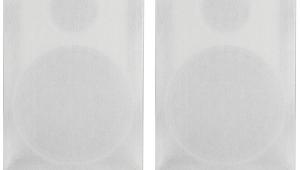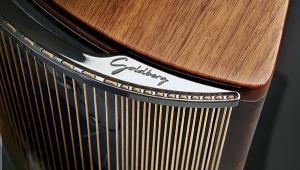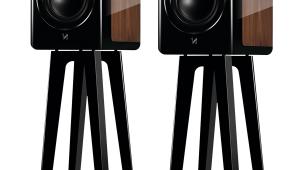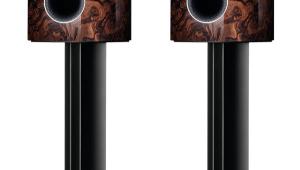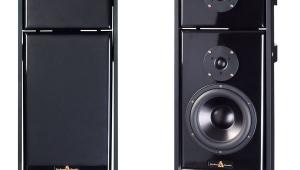Living Voice R80 Loudspeaker
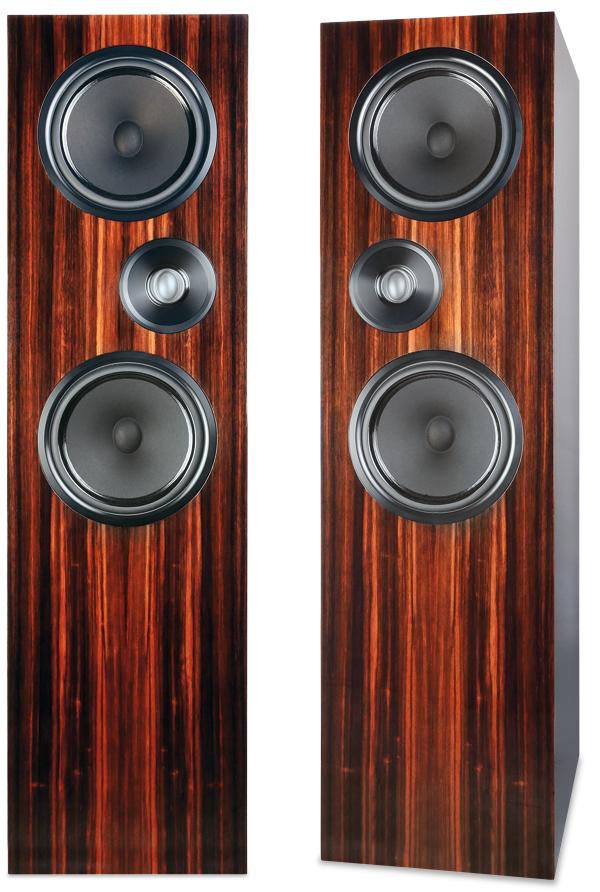
 Famed for its Vox Olympian model, Living Voice's new R80 is built to bring more than a taste of the flagship
Famed for its Vox Olympian model, Living Voice's new R80 is built to bring more than a taste of the flagship
Drop in on Derbyshire-based speaker company Living Voice at any hi-fi show, and it's hard not to be mesmerised by its Vox Olympian flagships. With styling somewhere between the brass section of an orchestra of several centuries ago, and a steam-powered Victorian imagination of a Dalek from Doctor Who, these £200,000+ models – £435,000 with the optional Vox Elysian subwoofers – are a riot of horns, tubes and 'trumpets'. Even in a high-end arena not known for its understated looks, they stand out. Moreover, once experienced, they are never forgotten.
By contrast, the R25A, launched in 2019 to mark the 25th anniversary of Living Voice's Auditorium model, seems not only traditional but also modestly priced (at least in the grand scheme of things) at £6350-£6650, depending on the finish. Now, into the gap between those extremes, slots the R80. This is a conventional-looking floorstander built in handed pairs and some 110cm tall, sporting a pair of bass/mid drivers straddling a dome tweeter (the brand's favoured MTM configuration), and is available with either internal or external crossovers in a choice of high-quality finishes.
In Or Out?
The entry-point is £41,000 for the internal 2.8kHz crossover (IBX) version in either Pippy Oak or Santos, rising to £47,000 for (extremely) Glossy Santos or Ebony finishes and £50,000 for special order custom colours. These same finishes are offered for the R80 OBX models, which house their crossover electronics in separate enclosures matching the speaker cabinets, for £45,000, £52,000 and £55,500 respectively. The review pair, pictured here, was the Glossy Santos IBX version.
First previewed at the Munich High End show three years ago, the R80 has been refined in the intervening period, the Living Voice development process being one of step-by-step experimentation and a lot of listening. Kevin Scott, Living Voice's designer explains, 'We have literally hundreds of components of different technologies in our R&D library, which we can refer to when we are voicing our designs. In our process, the subjective management of these unmeasurable, unquantifiable characteristics is as important as the strict science of precision crossover filter design'.

For example, all the internal cabling – including that used in the crossover's air-core inductors and wire-wound resistors – is subject to a deep cryogenic treatment, as are the gold-plated WBT binding posts. WBT 0845 silver solder is used throughout while the crossover capacitors are a mix of polypropylene and paper-in-oil types. As Kevin/Living Voice goes on to explain, 'it's a complicated business making something simple'. The result is an imposing-looking speaker, its height extended by the hefty plinth on which it sits. That said, it's much more traditional in styling than the phenomenal-looking Vox Olympian.
Globetrotting
Designed and built in Britain, the R80 nevertheless draws on components from overseas. The 'elliptical' drivers are sourced from Scan-Speak, based in the 'speaker belt' of Denmark's Jutland peninsula. The substantial cabinets, which combine 36mm-thick wood and epoxy composite panels with three frame braces, come from the Far East in order to achieve that mirror-like gloss finish to their book-matched veneers.
As I mentioned, the speakers are 'handed', with the tweeters offset from the larger drivers, and designed to be used inwards – ie, with the tweeters closer together than the mid/bass units. A single bass reflex port vents to the rear, midway up the cabinet and surrounded by a lavish trim-ring, and below this is the set of those bi-wire WBT terminals, able to be connected with wire links for single-cable operation.
Clean Living
The R80s' matt-black plinths, made from Delignit compressed beech ply and epoxy, are tapered from front to back. The way they attach to the main cabinet is unusual – an array of small disc-shaped magnets runs around the edges of the aperture into which the speaker sits, but these only locate the speaker in the plinth. The bond between the two is achieved with thin slivers of Blu Tack in each corner of the plinth aperture, the sticky stuff being supplied in the R80 accessory pack along with spikes and locknuts for the plinths, high-quality metal shoes to protect floors where required, and – a vital accessory for the speaker's fingerprint-magnet gloss finish – a comprehensive cleaning kit.
It's not exactly clear why the R80 uses this somewhat over-complex connection between plinth and cabinet, although siting and adjusting the plinth first before 'loading' the loudspeaker atop does help with setup. Simply bolting the two together, perhaps with a layer of damping sandwiched between the two, would be the more conventional approach but also make the ensemble that much more unwieldy. Either way, Living Voice says that within a few days the Blu Tack will do its stuff, bonding plinth and enclosure together.










